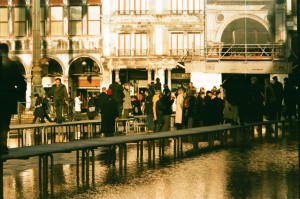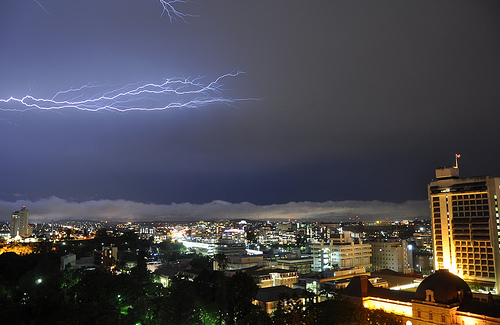You know what you want to do. You know where you want to go. Without these, you?d be on a rough start to planning your adventure vacation. Just as importantly, however, is when to go. Perhaps with adventure travel more than any other type, it?s essential to choose the right time of year, rather than simply choosing the week or two when it seems to best fit in your schedule.
Because of it?s active nature, taking an adventure vacation at the wrong time can not only make for undesirable weather conditions, it can actually be dangerous. Though each destination has their ideal time of year, here are some of the most important details to take into account.

Costa Rica, Belize and other countries in the Caribbean and Central America are among the top adventure travel destinations. With their rainforest, clear water and warm temperatures, travelers head here for everything from zipline tours to snorkeling, diving, hiking and a host of other activities. Many of these countries have a rainy season that runs through much of our summer here in the U.S. – a time when a large number of people take their vacations. Costa Rica and Belize?s rainy seasons run from June through November or sometimes into December and truly are quite rainy on a daily basis. This pattern is similar for much of Central America. The Caribbean?s hurricane season runs from July through November, though these patterns have been thrown off slightly in recent years, with hurricanes coming unexpectedly early. As it?s name suggests, this is not the ideal time to visit the Caribbean.

If you?re planning an African safari, a major determining factor of where and when to go is the availability of wildlife viewing. This is generally based on temperature and rainfall, and the seasons vary greatly from country to country. Namibia and Botswana, for example, are most visited during their summer months of July to October when they are dryer. Kenya?s high season, on the other hand, runs from January through March. Tanzania and other countries in East Africa have two rainy seasons – April through June and November through December. Planning your safari during the wrong season can not only make for miserable weather, but also hinder your viewing experience, so work carefully with your travel planner to map our your trip during the best time of year. This can be especially tricky if visiting several countries.
Much of Europe is popular for hiking, bike tours, walking expeditions and wine tours (among other activities). It?s tempting to go in the summer when you?ll have warm temperatures and it?s easier for most of us to take vacation time. You may want to think twice about this, though, for several reasons. First, July and August are prime tourist season, which makes the main cities quite crowded and often tougher to enjoy an authentic immersion – at least half the people you encounter are probably tourists. Secondly, these months are also when many Europeans take their vacations, and it is common for smaller businesses and restaurants to just shut down for several weeks when the owners are on holiday. You may especially experience this if your adventures take you through smaller towns and villages, limiting your options for dining, shopping and any unplanned accommodations. On a winter note, the city of Venice floods in the winter, this year to the point where outdoor tables and chairs floated away. Venice is famous for its New Year’s Eve celebration, but make sure to bring your rain boots!

Australia and New Zealand rank very high in the adventure spectrum. Though they often are portrayed with an image of sun and surf, these countries do have a rainy season and it could wreck havoc on your down under adventure. New Zealand particularly can get quite cold in the winter months of June to August and wet in the rainy season which runs November through February. This makes its sought after hiking trails, milford sound expeditions and extreme outdoor activities – skydiving and bungee jumping, for instance – less desirable. Australia?s rainy season (also during their summer) particularly affects coastal regions, known for their surfing and beach/water activities. In addition, there?s a ?jellyfish season? in north Australia that generally occurs for as long as October through April, in which the waters become un-swimmable because of the jellyfish.

Of course, each country, often times each city or town, has its own climate patterns and even these may change from year to year. Working closely with your travel planner to ensure that you choose the best time of year for your ideal experience and destination can help to make your vacation as free from weather hassle – and therefore as safe from weather troubles – as possible.
Tweet